A basic human skeleton is studied in schools with a simple diagram. It is also studied in art schools, while in-depth study of the skeleton is done in the medical field. This article explains the bone structure of the human body, using a labeled skeletal system diagram and a simple technique to memorize the names of all the bones.
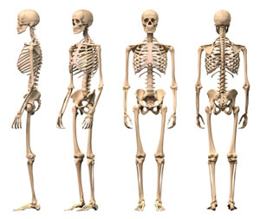
An infant skeleton has 350 bones, and some of these bones fuse.
So, a normal adult human has 206 bones.
Did you know that half of these 206 bones are present in the hands and feet?
The skeletal system is one of the important human body systems. Given above were some interesting facts above the human skeletal system.
Now, let us study it in detail.
The skeletal system is one of the important human body systems.
I have divided the human skeletal system, into 4 sections for better understanding, so let us go from top to bottom and study the human skeleton.
Skeletal System Diagram
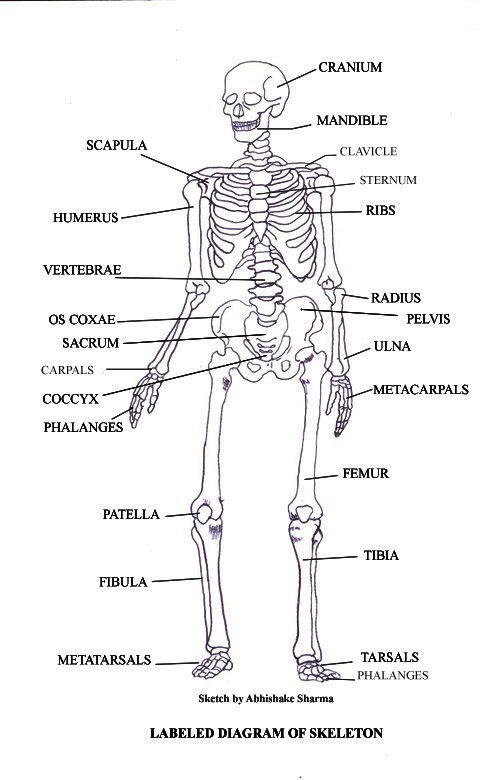
Bone Structure of the Head
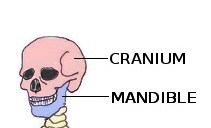
The head consists of many bones, mainly the cranium, jaw bones (maxilla and mandible) and the facial bones.
There are many bones which comprise the skeletal system and one of the important one is the cranium, which is commonly called skull. It protects the brain from any accidents or injury, it acts like a framework of the head.
The mandible is the strongest among the bones of the head.
Bone Structure of the Chest and Hip
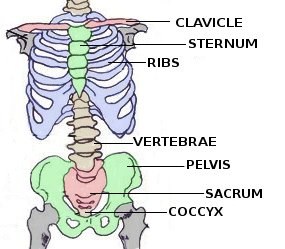
The bones shown in the chest and hip region in the labeled human skeleton diagram are the ribs, vertebrae, pelvis, OS coxae, sacrum and coccyx.
Total there are 12 pairs of ribs, as you can see in the diagram. The last pair of the ribs, which is at the bottom of the rib, are called floating ribs, as they are not attached to the sternum.
The ribs are arranged in a cage-like structure which protects vital organs like the heart and lungs. In the back area, the bones that protect the spinal column are called vertebrae.
They help to protect the spinal cord in the body. Pelvis is a Latin word, which means 'basin', it is also known as hip girdle. The primary function of the pelvis is to bear the weight of the upper body.
Bone Structure of the Hand
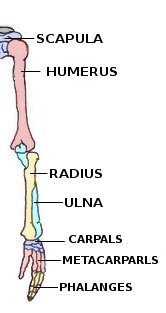
There are around 7 major bones from the shoulder to the palms.
They are scapula, humerus, radius, ulna, carpels, metacarpals, and phalanges.
The scapulae is the triangular, wing-shaped bones, which are located on the shoulders.
Humerus is located in the upper arm.
The radius and ulna together constitute the forearm.
Carpals are the bones which form wrist.
These are attached to metacarpals which are joined to phalanges.
Bone Structure of the Leg
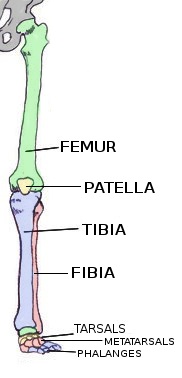
The bone structure in the leg is easy to memorize and draw, as it consists mainly of 6 bones.
These bones are femur, patella, tibia, fibula, tarsals, and metatarsals.
Femur is the longest and heaviest bone in the body, and helps to support the weight of the body.
Patella is located in front of the knee-joint, and commonly called the kneecap. It helps to cover and protect the knee-joint.
Fibula and tibia bones are located in the calves of the legs.
The foot bones shown in the labeled diagram of skeletal system, are the tarsals and the metatarsals.
There are seven tarsal bones, which are followed by metatarsals which are then followed by phalanges or toe bones.
Memorizing the Bone NamesIt can be a bit difficult to remember all the scientific names of bones, but here is my secret technique of remembering the names.
- First, divide the labeled diagram of skeleton in 4 sections, like above, which are head, arms, chest + hips and the fourth one - legs.
- So, for the head remember J, F and C, which are for Jaw bones, Facial bones and Cranium.
- For legs remember the letters F, P, T, F, T and M and memorize the order, these letters stand for Femur, Patella, Tibia, Fibula, Tarsals and Metatarsals.
- In a similar manner use the method, for chest + hips section and hands section.
This method works great for me, I hope this method also helps you to memorize the labeled human skeleton diagram.
Unlabeled Skeleton DiagramFor practice, you can print the blank skeleton diagram illustrated below.
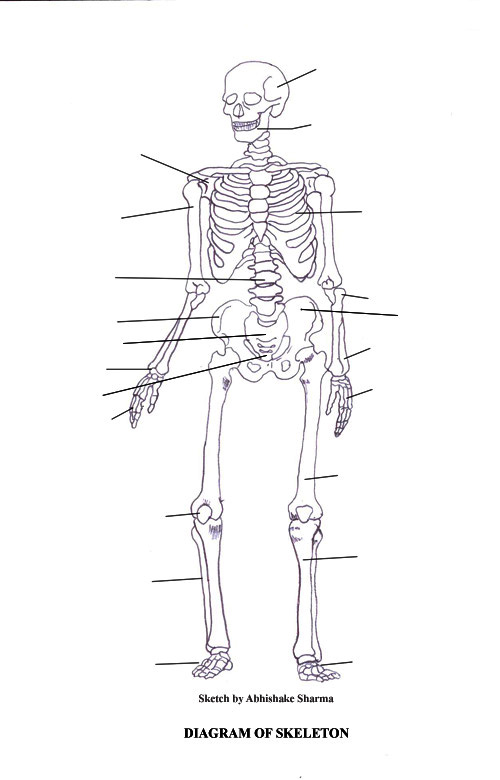
Fun Facts About SkeletonGiven above were the tips on memorizing the various parts of the skeleton. Here are some interesting facts about skeleton.

Among the 206 bone in the human skeletal system, 52 are found in our feet!

Bones are made of hard stuff which makes them strong, however, bones also have many living cells that help in their growth and repair.

Did you know that the smallest bone in the human body is located in the ear? The size of the smallest bone called stirrup, is the size of a grain of rice.

Bones are filled with bone marrow, which is a fatty substance.

To keep the bones strong, one should exercise regularly.

In adults, the bones contribute to 14% of the total body weight.

Did you know that one person out of 20 has an extra rib? Strange, right?!

The cartilage disintegrates faster than the bone, hence you will observe absence of nose or ears in the skeleton.

Also, babies don't have kneecaps. Technically, they do have kneecaps but they are soft cartilage and yet to harden into bones.

Giraffes and humans both have 7 bones in their neck, however the vertebrae present in the giraffe's neck are way longer!

Bones are stronger than concrete and steel, still doctors can be seen fixing fractures year-round!
Skeletal System QuizType the correct answer in the box and click on check to see if your answer is right.
There is a little difference between the male and female skeleton, but mostly they look similar. The female skeleton is slightly smaller and less robust. The female skeleton also has a wider pelvis, compared to the male skeletal system. So study the above diagram, and for memorizing, draw it a few times and keep labeling!


 An infant skeleton has 350 bones, and some of these bones fuse.
An infant skeleton has 350 bones, and some of these bones fuse.





 Among the 206 bone in the human skeletal system, 52 are found in our feet!
Among the 206 bone in the human skeletal system, 52 are found in our feet! Bones are made of hard stuff which makes them strong, however, bones also have many living cells that help in their growth and repair.
Bones are made of hard stuff which makes them strong, however, bones also have many living cells that help in their growth and repair. Did you know that the smallest bone in the human body is located in the ear? The size of the smallest bone called stirrup, is the size of a grain of rice.
Did you know that the smallest bone in the human body is located in the ear? The size of the smallest bone called stirrup, is the size of a grain of rice. Bones are filled with bone marrow, which is a fatty substance.
Bones are filled with bone marrow, which is a fatty substance. To keep the bones strong, one should exercise regularly.
To keep the bones strong, one should exercise regularly. In adults, the bones contribute to 14% of the total body weight.
In adults, the bones contribute to 14% of the total body weight. Did you know that one person out of 20 has an extra rib? Strange, right?!
Did you know that one person out of 20 has an extra rib? Strange, right?! The cartilage disintegrates faster than the bone, hence you will observe absence of nose or ears in the skeleton.
The cartilage disintegrates faster than the bone, hence you will observe absence of nose or ears in the skeleton. Also, babies don't have kneecaps. Technically, they do have kneecaps but they are soft cartilage and yet to harden into bones.
Also, babies don't have kneecaps. Technically, they do have kneecaps but they are soft cartilage and yet to harden into bones. Giraffes and humans both have 7 bones in their neck, however the vertebrae present in the giraffe's neck are way longer!
Giraffes and humans both have 7 bones in their neck, however the vertebrae present in the giraffe's neck are way longer! Bones are stronger than concrete and steel, still doctors can be seen fixing fractures year-round!
Bones are stronger than concrete and steel, still doctors can be seen fixing fractures year-round!